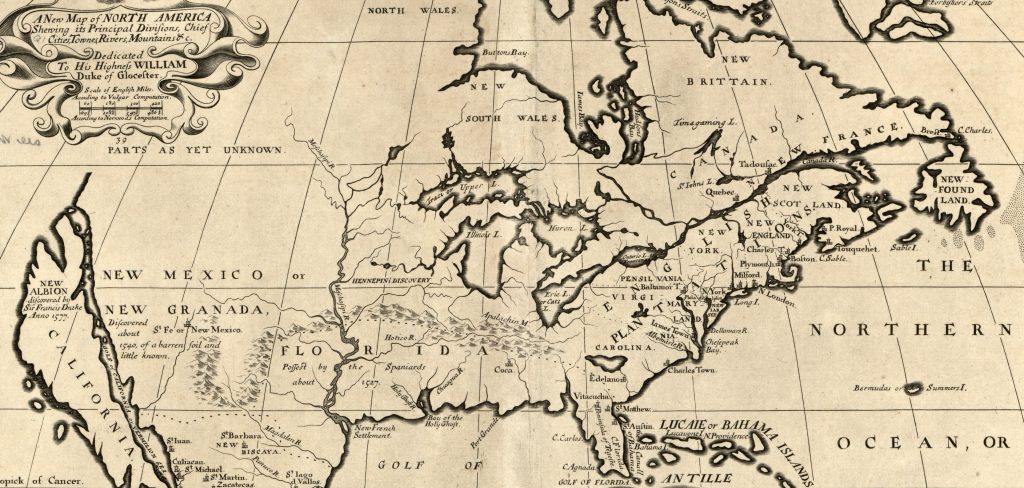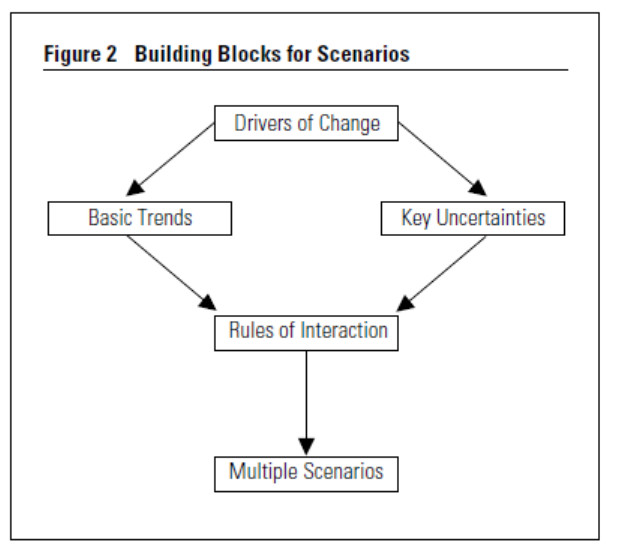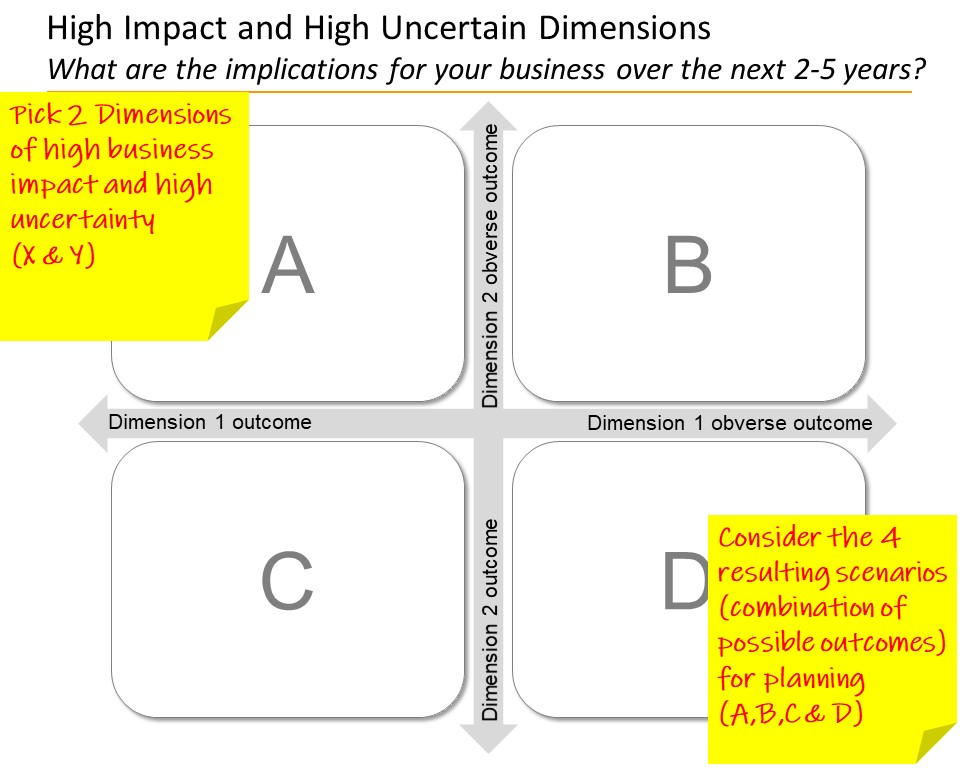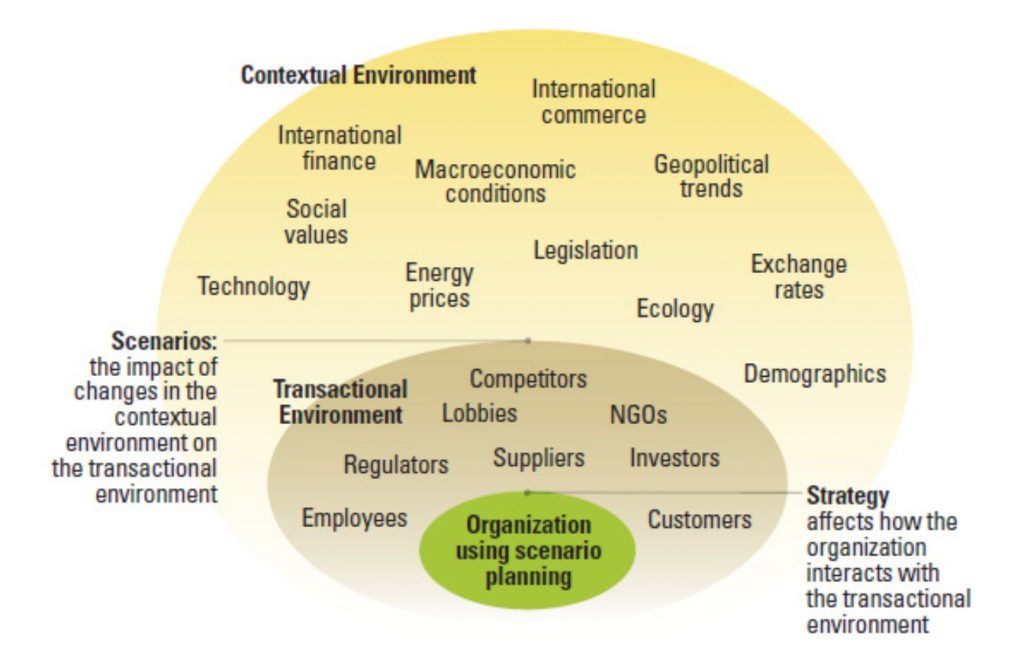
Parts As Yet Unknown “A new map of North America shewing its principal divisions, chief cities, townes, rivers, mountains,” Library of Congress, https://www.loc.gov/resource/g3300.ct003990/?r=-0.206,-0.047,1.396,0.482,0
“Scenarios are well crafted narratives about the future that tell very different stories about what might happen… …the aim is to stress test your current strategy and make sure your plans contain enough flexibility that you will win no matter what the future brings”1
Paul Schoemaker, Senior Fellow and Former Research Director, Wharton’s Mack Institute
From Bain’s periodic management tools survey summary, “Scenario and Contingency Planning allows management to pressure-test plans and forecasts, and equips the company to handle the unexpected.”2 For COVID-19, key issues could include: Crisis Length, Recovery Time, Sales Impact, Social Distancing Impact, Supply Scarcity, Workforce Retention, and Expense,3 while also considering Customer Expectations and Supplier Offerings.
Each combination of industry, company, location and individual workers’ situation is unique, but we can use relevant dimensions to create plausible scenarios to bound the uncertainty we cannot know. Scenario planning in our experience is a bit of art and science, as analysis can quickly get out of hand through, for example, too many scenarios. The following illustrates a number of key analyses which we believe will help you pressure-test your strategy and vision as you work toward your next-normal environment.
AN APPROACH TO SCENARIO PLANNING

From Schoemaker, “Scenario Planning: A tool for strategic thinking,” MIT SMR, Winter 1995
Schoemaker’s Figure 2 graphic generally aligns with an approach we have used successfully with a client. So, the following steps include our summary of each step as an illustration of the five steps or building blocks of Schoemaker’s scenario model.
Drivers of Change— focus on scope, timing and stakeholders to identify what are most important to our strategy and vision.
Basic Trends— are relevant to the drivers, external and generally certain. Said another way, trends carrying only marginal uncertainty.
Key Uncertainties— allow us to capture and range environmental factors whose uncertainty is high as well as exhibiting high potential consequences.
Rules of Interaction— consider the assumptions, interdependencies, and inferences between trends and uncertain environmental factors.
Multiple Scenarios— we typically pair factors with high uncertainty and high impact at both ends of their uncertainty continuum. This pairing allows creation of a 2×2 matrix proving 4 potential scenarios. The quality of the pairing is where the art and science come together. See graphic titled “High Impact and High Uncertain Dimensions”

Source: NextForge analysis
COVID SCENARIOS DEPEND ON THE VIRUS
For example, Boston Consulting Group believes it will take 24 months to develop and deploy a working vaccine, and they breakdown the COVID impact into three phases (flatten, fight and future) considering:4
- Disease progression
- Healthcare system capacity
- Government policies and stimulus
- Business engagement, response, and degree of reopening
- Public engagement and response
All of these factors impact not only consumers, companies and industries, but also impact each constituencies’ confidence to drive demand. In this same article, BCG posits in some geographies, there will be new episodes of COVID disease growth leading to repeated lock-down mandates.
SCENARIOS DEPEND ON TYPE OF INDUSTRY
For example, Bain has defined several business types (e.g., Customer-facing Businesses, Manufacturing Plants, Warehouses and Distribution Centers, and Offices) each with a unique fingerprint of characteristics:5
- 6 Worker risk factors
Possible mitigating action areas
- Personal health and safety
- Physical workspace
- Staffing and attendance
- HR policies
- Travel policies
- External interaction
Bain’s iterative framework for work-site ramp-up addresses the uncertainty of a complex number of factors. There are any number of approaches to each level of uncertainty (e.g., simple, complicated, complex and chaotic), the advance, retreat, adapt, and repeat approach is representative of the chaotic environment we find ourselves while in this COVID-19 world.6

Source: Bain & Company— “Back to Work” Fig 11: Advance; Retreat; Adapt; Repeat7
SCENARIOS: AT THE INTERSECTION OF ENVIRONMENT AND EXECUTION

From Ramirez, et al, “Using Scenario Planning to Reshape Strategy” MITSMR, Summer 2017 https://sloanreview.mit.edu/article/using-scenario-planning-to-reshape-strategy/
Just a few comments about this MIT scenario graphic. We go to all the work of creating scenarios to test our strategic and operational resilience. We want to consider the implications of uncertainty at the boundaries of operations, and we want to understand if we have enough organizational resilience to endure plus enough organizational muscle to adapt to a range of possible futures. Another supportive tool is building in action triggers as the certainty of a given scenario grows or uncertainty shifts.
We discuss scenario planning as a complement to Agile Business including, for example, Shell’s scenario layers (global to local)8 in our “Why Agile Management? Because it is an increasingly VUCA world” (See the section headed “Beyond Agile— Scenario Planning”). Also in this article, we introduce the Cynefin Framework (See table “Cynefin Framework— From Several Perspectives”) giving a range of four categories of uncertainty from “simple” to “chaotic” including management approaches associated with each category/domain.
Key Thought: General Eisenhower is often quoted “Plans are worthless, but planning is everything.”9 Scenario planning for pressure-testing strategy is like that— you may not need it, but when the worst hits, you know you are ready.
This article is part of our COVID series— “Getting to Your Next-Normal” – a four-part series originally distributed to clients and colleagues in early June, 2020.
Also see the remainder of the series
- Getting To Your Next-Normal
- Agile Leadership For Organizational Adaptability, At-A-Glance
- Supply Chain For Operational Resilience, At-A-Glance
END NOTES
- Schoemaker, “How to Prepare for the Unexpected,” Inc., https://www.inc.com/paul-j-h-schoemaker/scenario-planning-prepare-for-unexpected.html
- See “Scenario and Contingency Planning,” Bain & Company Management Tools, https://www.bain.com/insights/management-tools-scenario-and-contingency-planning/ Also consider: time frame; assumptions; refresh based on company and market activity/trends
- Barry, “Turn What-If to What-Now: The importance of Scenario Analysis,” https://articles.bplans.com/turn-what-if-to-what-now-with-scenario-analysis/
- Gjaja, et al, “COVID-19: Win the fight, win the future,” Boston Consulting Group, https://www.bcg.com/en-us/publications/2020/covid-scenario-planning-winning-the-future-series.aspx
- Saenz, et al, “Back to work,” Bain & Company, May 2020, https://www.bain.com/insights/covid-19-back-to-work-advance-retreat-adapt-repeat/
- See Reeder, “Why Agile Management? Because it is an increasingly VUCA world,” Nextforge Point of View, https://nextforge.com/?p=2449. In particular see the table titled “Cynefin Framework— from several perspectives” where various management approaches are mapped to each of the four domains of uncertainty
- Saenz,et al, “Back to Work,” Bain & Company, 2020 https://www.bain.com/insights/covid-19-back-to-work-advance-retreat-adapt-repeat/ Note: This approach is similar to management approaches necessary in the Complex and Chaotic domains of the Cynefin Framework (For more detailed description see table “Cynefin Framework” in Reeder, “Why Agile Management? Because it is an increasingly VUCA world,” NextForge, https://nextforge.com/?p=2449)
- See “Three Decades of Scenario Planning in Shell,” California Management Review, Fall 2005, https://www.scribd.com/document/122417705/Three-Decades-of-Scenario-Planning-in-Shell-California-Management-Review-48-1-2005
- “Dwight D. Eisenhower” https://en.wikiquote.org/wiki/Dwight_D._Eisenhower Quote of “Plans are worthless, but planning is everything,” from a speech to the National Defense Executive Reserve Conference in Washington, D.C. (November 14, 1957); in Public Papers of the Presidents of the United States, Dwight D. Eisenhower, 1957, National Archives and Records Service, Government Printing Office, p. 818


3 Responses